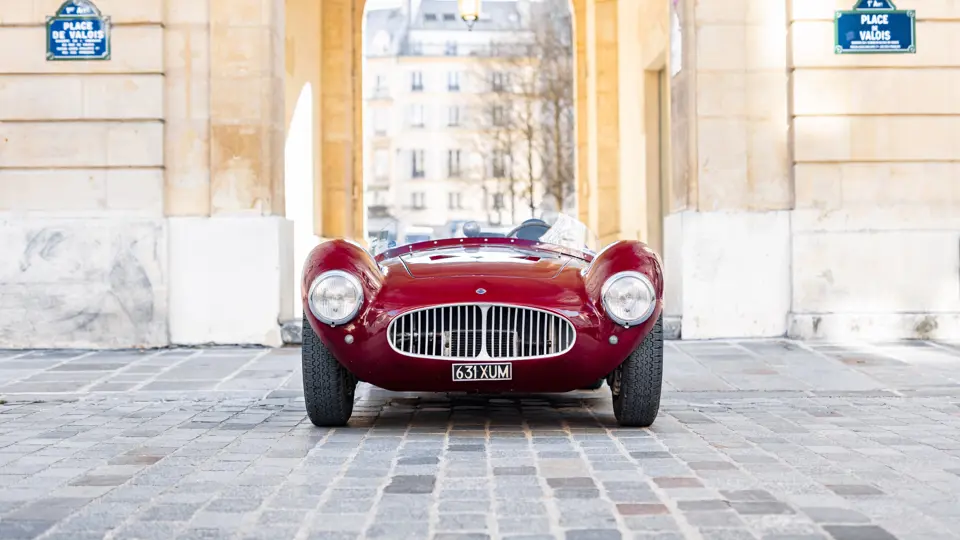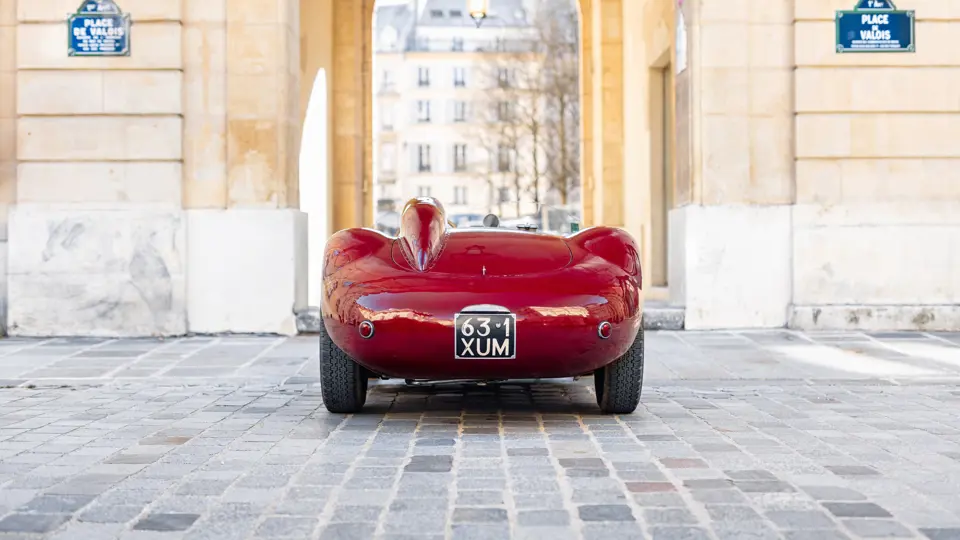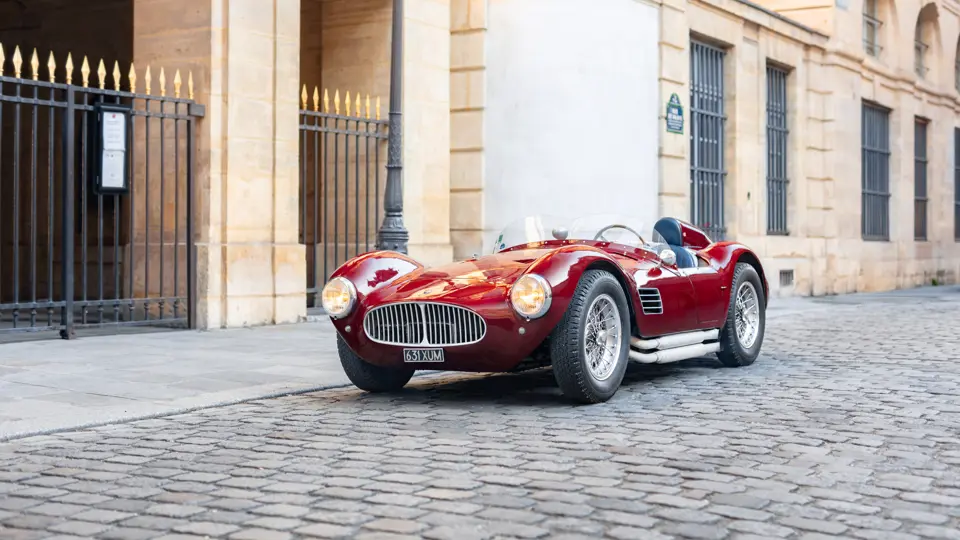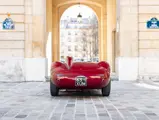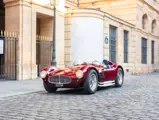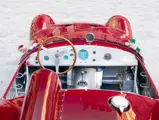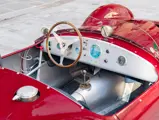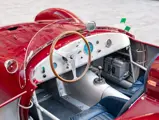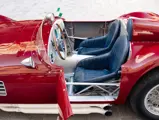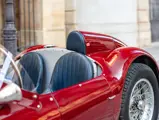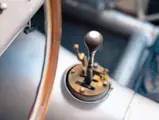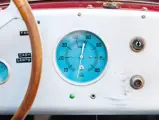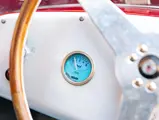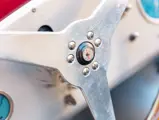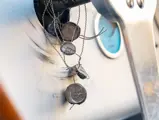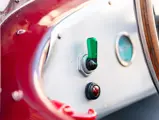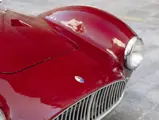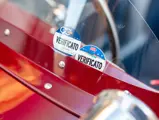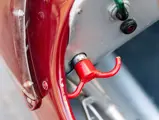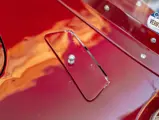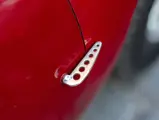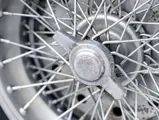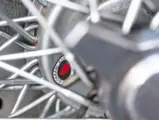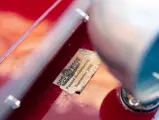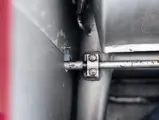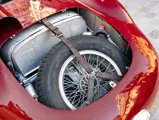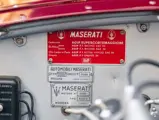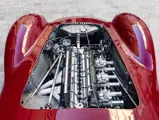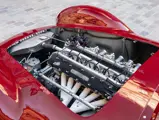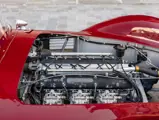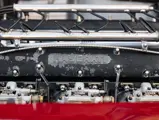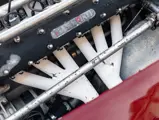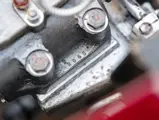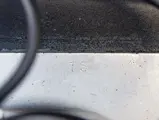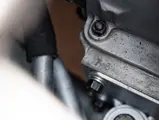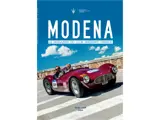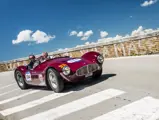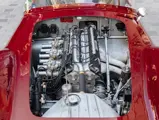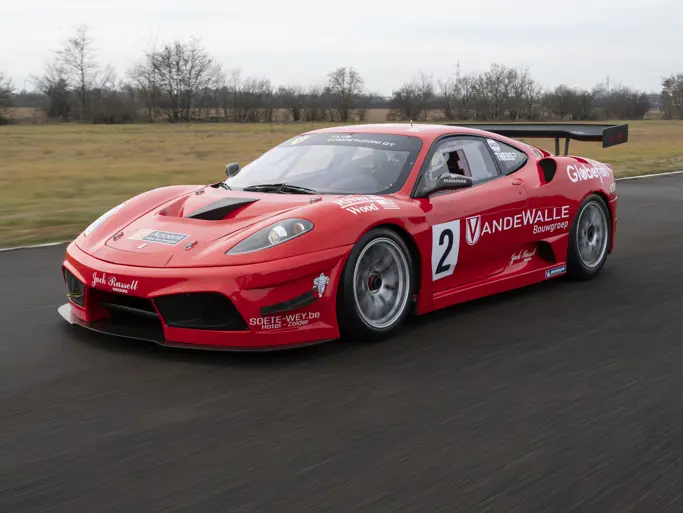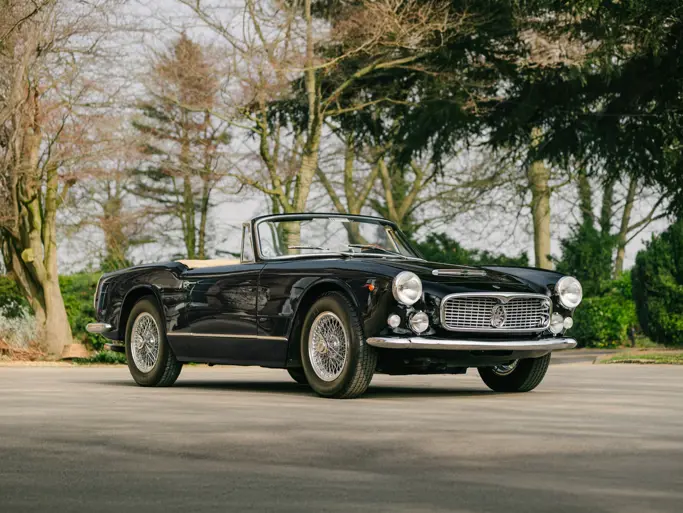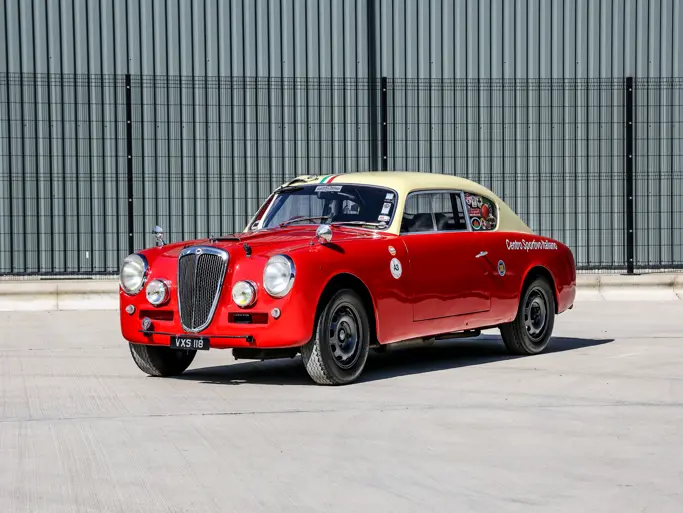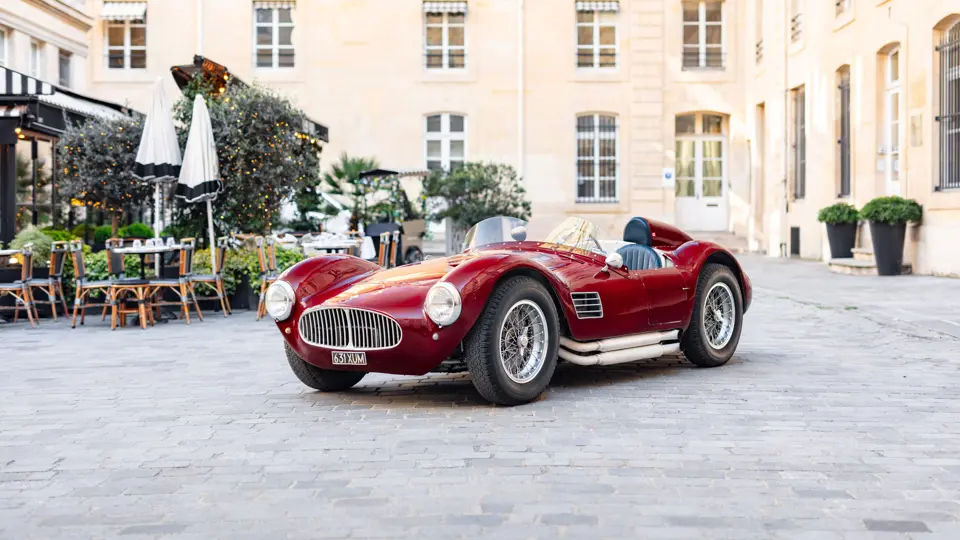
1954 Maserati A6GCS
{{lr.item.text}}
Price Upon Request
{{bidding.lot.reserveStatusFormatted}}
- Rich period racing history in events across Europe and the UK
- Featured in Walter Bäumer and Jean-François Blachette’s definitive book, Maserati A6GCS
- A five-time Mille Miglia participant with the current owner, listed in the Registro 1000 Miglia
Maserati A6 GCS chassis number 2065 was one of two such cars ordered from Maserati in 1953 by the French Importers Garage Mirabeau in Paris. The sister car, chassis no. 2064 was retained and raced by Jean Simone, who was the co-owner of Garage Mirabeau along with Jean Thepenier. Chassis no. 2065 was delivered to Armand Roboly. Simone and Roboly had raced many times as co-drivers in a Jaguar C-Type, and were close friends and enthusiastic participants in French motor racing of the era.
Chassis number 2065’s build sheet indicates that it was completed on 11 April 1954 and given a temporary Italian registration number of BO 36382. The colour was noted in the build sheet as French Blue, however contemporary photographs suggest it was in a lighter hue than usual. Following delivery to France, Armand Roboly gave the new car its first outing in late April 1954 at the Marrakech Grand Prix in Morocco. His friend Jean Simone raced the sister car in the same event. Roboly finished that race in 3rd place, whilst unfortunately Simone was injured in a crash.
The A6 GCS then participated actively in France during the 1954 season, including entries at the Coupes de Paris, 12 Heures of Reims, Grand Prix des Sables d’Olonne, Grand Prix de la Baule, and the Coupes de Salon at Montlhéry. The car’s early racing history is beautifully chronicled in Walter Bäumer and Jean-François Blachette’s recently published book, Maserati A6GCS.
Chassis no. 2065 was then sold, most probably again through the business relationship Roboly maintained with Garage Mirabeau, although the car was physically collected in Modena suggesting that it was factory refurbished and prepared prior to sale. Its new owner was Andre Loens, a native of Northern France but at that time resident in Southampton in the UK. Loens was a highly competent driver who was very active in 500 cc racing and the purchase of this A6 GCS must have been a significant investment for him and a serious step up the racing ladder. The car was kept in its blue livery and retained its temporary Bologna registration markings. The car first reappeared in native Northern France at Lille, and its arrival was enthusiastically described in the local press.
Loens’ first outing with the car however was in the UK where it was entered in the 2.0-litre class at the 1955 Goodwood Easter outing. Loens raced the car with great energy and some notable success during 1955, moving the car between Finland, France, Sweden, participating in the Swedish Grand Prix, then to Jersey, and finally back to the UK where he entered chassis no. 2065 in the 1955 Tourist Trophy at Dundrod in partnership with Jo Bonnier. The two drivers finished first in the 2.0-litre category. Their final race of 1955 was at Castle Combe in October.
Loens’ intense activity with the car continued in 1956 with a similarly diverse set of entries sequentially in Helsinki, Belgium, France, Denmark, Sweden, and then back at France for the Coupe d’Automne and finally again at the Coupes de Salon where Loens is photographed happily conversing with Stirling Moss, Alfonso De Portago, and Harry Schell as they approached the track.
In 1957, the season resumed in a similar pattern. The A6 GCS was again in Scandinavia in May, at Elaintarhanajo in Helsinki, followed by a return to Forez in France. We can well imagine that by this time, chassis no. 2065 was tired, and its physical condition today shows evidence of several racing incidents, notably some strengthening of the chassis members as they pass above the rear axle. Perhaps for this or some mechanical reasons, Loens appears in the car at the grid of the Deux Heures du Forez in July 1957 but did not start. This may have been a contributing reason for Loens to travel to Modena later that same month to trade his now well-used and surely much-loved A6 GCS for the more recently built 200 S. The Maserati factory archives record this transaction and whilst the car was evidently in an adequately drivable condition, such that it could arrive on the grid at Forez, Loens fatefully decided to exchange his faith in chassis number 2065 for a newer Maserati. Sadly, Loens died in an accident driving the new 200 S, back at the familiar circuit of Montlhéry in October 1957 whilst leading the race.
The last recorded location for this A6 GCS has caused debate over the whereabouts of the car in the intervening years. It was not unusual for Maserati to take older model cars back into their stock for refurbishment and resale. In order to assist with sales of newer cars, Maserati themselves often refurbished racing cars for a ‘second’ life on the circuits. Given Andre Loens’ prolific activity with the car, we can imagine that it arrived back in Modena in a condition where a great deal of refurbishment work was needed. The car was by then approaching five years of age and whilst the A6 GCS was a highly reliable, much-loved, and still competitive racing car, with a strong following, it was also in 1957 that Maserati itself withdrew from racing and, simultaneously, that road racing was being banned in European countries following the series of fatal accidents. Under these circumstances it seems unlikely that Maserati, a company facing financial pressure at the time, and concentrating on its road cars, would have thought it a productive investment to restore a worn and well-used A6 GCS.
What is well known and shown in numerous period photographs is that a large number of historical racing cars had been accumulated at the factory for the purpose of maintaining a heritage collection, together with a larger number of racing cars, complete and incomplete, in various forms of storage, repair, and restoration. The fact that chassis no. 2065 is documented as being one of such cars present at the factory at the end of its racing life in 1957 is an intriguing component to recent efforts to fill out the gaps in its history.
In 1998, the factory department “Maserati Vendite”, issued by signed telefax, a copy of the build sheet of chassis no. 2065 to assist in a restoration of the car ongoing at the time in Reggio Emilia. Photographs of this restoration show a rolling chassis with partly disassembled bodywork and provide close detailed evidence that this car is the one offered here today. The accompanying documentation includes a number of attestations from the workshop, stating that the car was delivered to them as a ´rolling chassis’. This carrossière performed the full refurbishment and reassembly of the car, works mainly to the bodywork, however the identity of the owner at the time has not been ascertained.
By 2001, now in a completely new livery of red and dark blue, chassis no. 2065 was introduced at a presentation given in a Maserati concessionaire in Modena. Photographs of the event show a number of recognisable attendees associated with the marque admiring the car at its first presentation in public. Shortly after this the car was sold to a well-known German collector driver of Maseratis in vintage racing. As such, the car then ran frequently in the Shell Historic challenge in the early 2000s.
Following a subsequent sale of the car to an Australian collector, who entered the car twice in the Mille Miglia Historic, the well-known and highly respected race support and engineering firm of Hall & Hall in the UK took responsibility for maintenance and preparation. Both Rick and Rob Hall personally became fascinated by the car and its history. Together with the Historian Richard Crump they decided not to spend time trying to piece together the missing timeline, because for all anyone knew the car may never have left the factory to race in period again after 1957. Documentation of such re-purchased cars was disrupted during the turbulent periods of Maserati ownership by Citroen and De Tomasso.
Instead Hall & Hall went back to basics and examined the car from a purely technical and engineering perspective. They became totally convinced that the car showed all the correct signs of originality together with the sort of repairs and scars which would have been inflicted during such a busy racing life. It was also noted that no attempts had been made to cosmetically improve the chassis, even in the area of the rear-end stiffening, which looks like a trackside repair, not one made with permanent intent. At this time the car was in good running condition following its relatively recent renaissance in Italy, and was being enjoyed by its owner, so Hall & Hall had no reason to fully dismantle the car and continue this forensic endeavor. The owner simply wanted to enjoy the car.
CURRENT OWNERSHIP
The current custodian of chassis no. 2065 had been a collector of twelve-cylinder Ferrari road cars since the mid-1990s. Despite owning cars such as an alloy-bodied 275 GTB with six-carburetors, he began to tire of the relative softness of such models and stepped out into the world of road-race cars when he purchased a 500 Mondial, and then added to that a 200 SI.
Now a complete convert to this new motoring challenge, and all the event potential it offered, he explored these two four-cylinder models enthusiastically, partly in rallies with the Maserati Club of Italy, and came to the conclusion that he wanted to move to a six-cylinder car which would offer a more linear engine response and be better suited to long road events such as the Mille Miglia. Searching specifically for an A6 GCS, he found that chassis no. 2065 seemed to be the most original and well-prepared example on the market at the time, and thus it was purchased.
During his ownership, the car has always been enthusiastically driven and has continued to appear in the Mille Miglia on now a total of five occasions within the last twelve years. However, the car was rarely transported to or from the event and instead was driven from Brescia and back to its summer storage in southwest France both on the heavily trafficked route along the French Riviera and over the Alpine routes. Typically, the current owner would add at least 1,200 km to the Mille Miglia itinerary in driving to and from the event. He admits to having stayed in more luxurious hotels than offered on the Mille Miglia, but he and his companions kept their clothes in an Ikea bag stored above the spare tyre. The car never missed a beat. The car is listed on the Registro 1000 Miglia and would be welcomed with open arms back to future iterations of the fabled event.
In 2020, the well-used A6 GCS began to show signs of valve wear and whilst it was still performing reliably, the decision was made to do a complete engine restoration using the highly reputed French specialists, AB Racing SARL, the owner’s long-term support outfit for engineering and event preparation in Europe. This work happily coincided with the preparation of the recently published definitive book on the model, Maserati A6GCS, authored jointly by the knowledgeable Maserati historian Walter Bäumer and Jean-François Blachette, Club Maserati France Chairman, in which the car is appropriately referenced.
Whilst the engine was removed for a complete rebuild, an opportunity was created to examine the car in close detail by dismantling many components such as brake drums, transmission, and chassis to reveal their mechanical story and to piece together a full understanding of what has happened to the car technically since its delivery in 1954. In summary, it was revealed that many components of the car had never been fully disassembled before. Wear patterns and the condition of internal components showed a perfect consistency. These include the brake drums, the sand cast block, and the cylinder head (which still bore the original steel wires used to hold the cores during casting). The chassis paint history can be traced and shows its correct series of coatings in sequence to what finally appears to have been a cheap and quick cosmetic overspray made during the Italian restoration. Many matching factory assembly numbers are present on the car and the serial number 2065 is of course stamped on the cylinder head and chassis. Additionally, after cleaning decades of grime on the steering box casing, the stamped number 2065 was also discovered in the correct Maserati font for the period. A most important discovery was also made on the anti-roll bars which have been sleeved and the sleeve seam then welded. This was barely visible under the layers of paint but reference to the 1954 build sheet, issued officially by the factory in 1998, states that a special client request was made to stiffen the roll bars—“barra de compensations diamètre 14 (Tipo a tube latérali saldati)”. As far as it is known, 2065 may be the only A6 GCS with this factory modification. A twelve-page detailed report is included in the history file.
Whilst no work has been done to examine the bodywork, as the owner was keen to regain use of the car, the consensus is that as a running chassis, 2065 is amongst the most original A6 GCSs in existence. Its condition suggests strongly that the car was unused since its period racing days and then restored with quite minimal mechanical work perhaps in order for it to be sold in the early 2000s. It is presently in top mechanical condition, having seen little use since the thorough rebuild in 2024, and a fresh service in January 2025, making it ready to tackle any number of historic racing events in the 2025 season.
| Period Race History for Maserati A6G CS, chassis no. 2065 | ||||
|---|---|---|---|---|
| DATE | EVENT | DRIVER | RACE NO. | RACE RESULT |
| April 19, 1954 | Grand Prix de Marrakech | Armand Roboly | 3rd OA | |
| April 25, 1954 | Coupes de Paris | Armand Roboly | 130 | 5th OA |
| July 4, 1954 | 12 Hours Reims | Armand Roboly | 31 | DNF |
| July 18, 1954 | Grand Prix des Sables d'Olonne | Armand Roboly | 3rd OA | |
| August 22, 1954 | Grand Prix La Baule | Armand Roboly | 12 | 10th OA |
| September 19, 1954 | Coupe d'Automne | Armand Roboly | 9 | 2nd OA |
| October 10, 1954 | Coupes du Salon | Armand Roboly | 24 | 18th OA |
| April 12, 1955 | Goodwood Easter Meeting | André Loëns | 98 | 6th OA |
| May 8, 1955 | Eläintarhanajo | André Loëns | 6 | 8th OA |
| May 29, 1955 | Grand Prix des Frontières | André Loëns | 18 | DNF |
| July 22, 1955 | Bouley Bay Hillclimb | André Loëns | 25 | 2nd OA |
| August 7, 1955 | Grand Prix Sweden | André Loëns | 24 | 3rd OA |
| August 14, 1955 | Kanonloppet | André Loëns | 24 | 3rd OA |
| September 4, 1955 | Stockholmsloppet | André Loëns | 34 | 1st OA |
| September 18, 1955 | Tourist Trophy | André Loëns/Joakim Bonnier | 56 | 18th OA, 1st IC |
| October 1, 1955 | Castle Combe National | André Loëns | 51 | 5th OA |
| May 10, 1956 | Eläintarhanajo | André Loëns | 23 | 5th OA |
| May 20, 1956 | Grand Prix des Frontières | André Loëns | 42 | DNF |
| July 15, 1956 | Grand Prix des Sables d'Olonne | André Loëns | 17 | 2nd OA |
| August 12, 1956 | Cran d'Escalle Hillclimb | André Loëns | 21 | 1st OA |
| August 19, 1956 | Roskilde Ring | André Loëns | 23 | 1st OA |
| August 26, 1956 | Kanonloppet | André Loëns | 1 | 2nd OA |
| September 9, 1956 | Roskilde Ring | André Loëns | 21 | 3rd OA |
| September 23, 1956 | Coupe d'Automne | André Loëns | 32 | 3rd OA |
| October 7, 1956 | Coupes du Salon | André Loëns | 36 | 9th OA |
| May 12, 1956 | Eläintarhanajo | André Loëns | 5 | 5th OA |
| May 30, 1956 | 2 Hours forez | André Loëns | 68 | DNS |


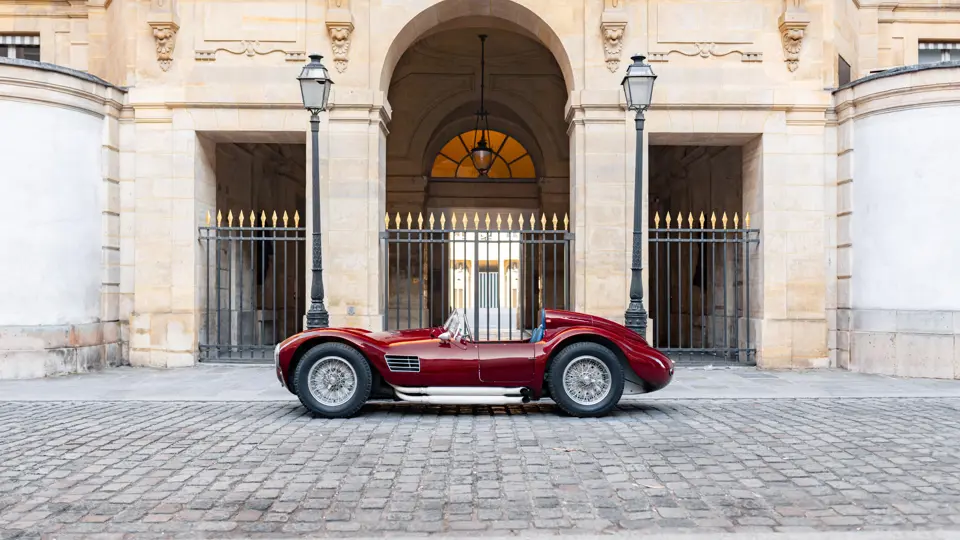

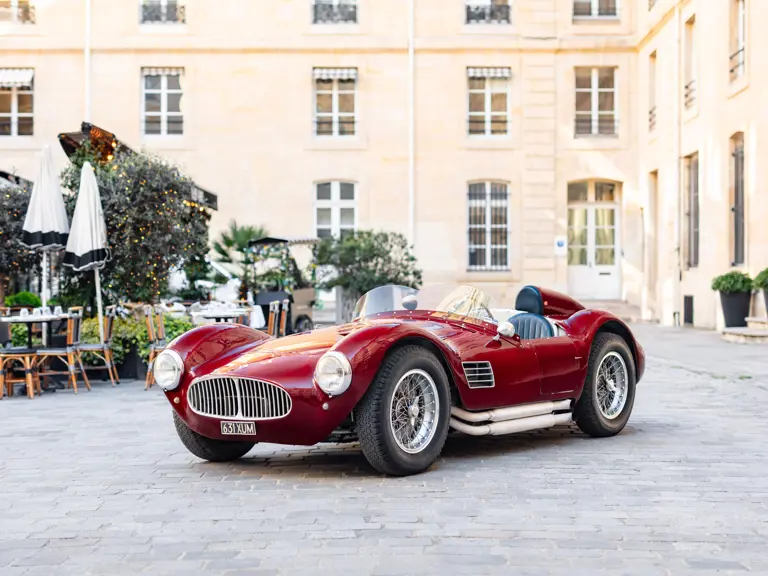
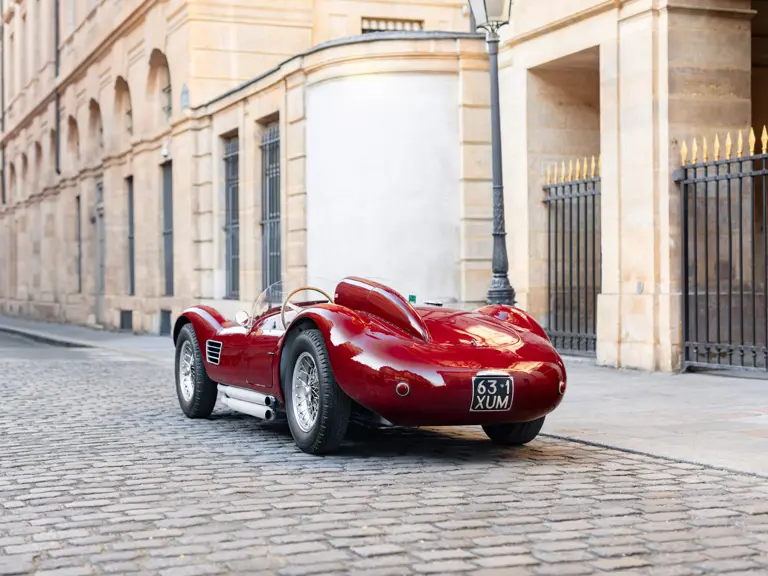

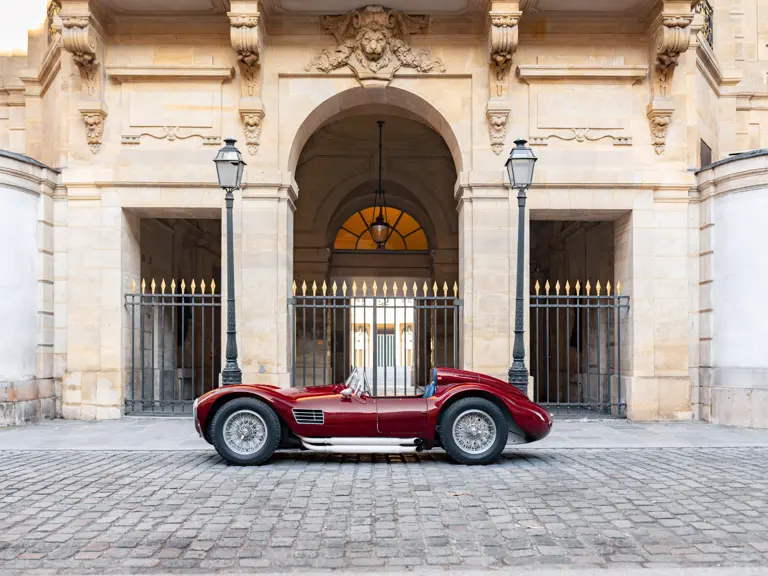
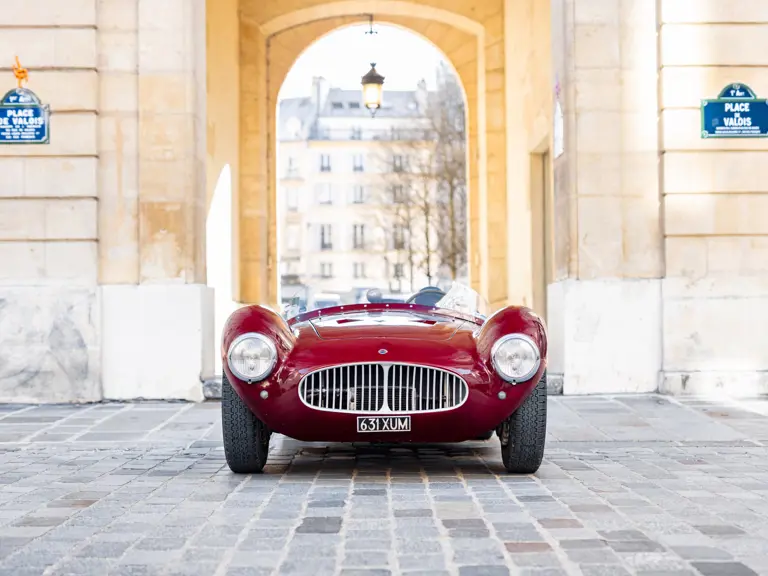

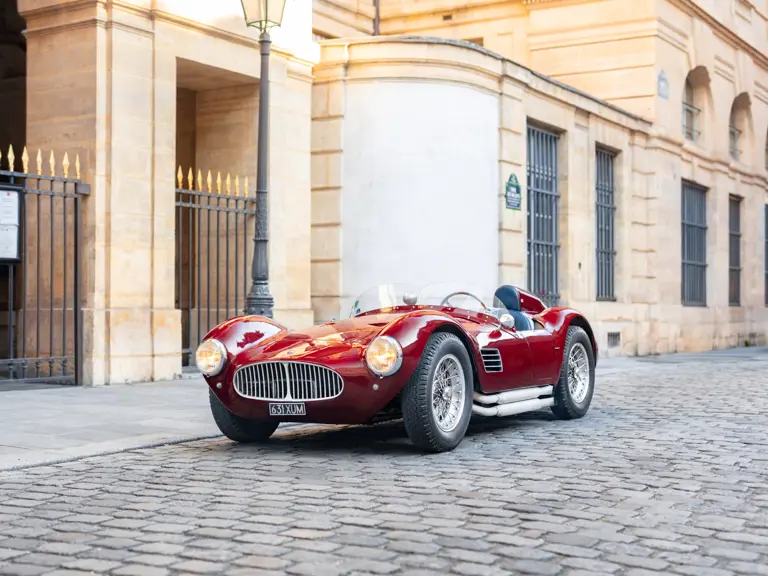
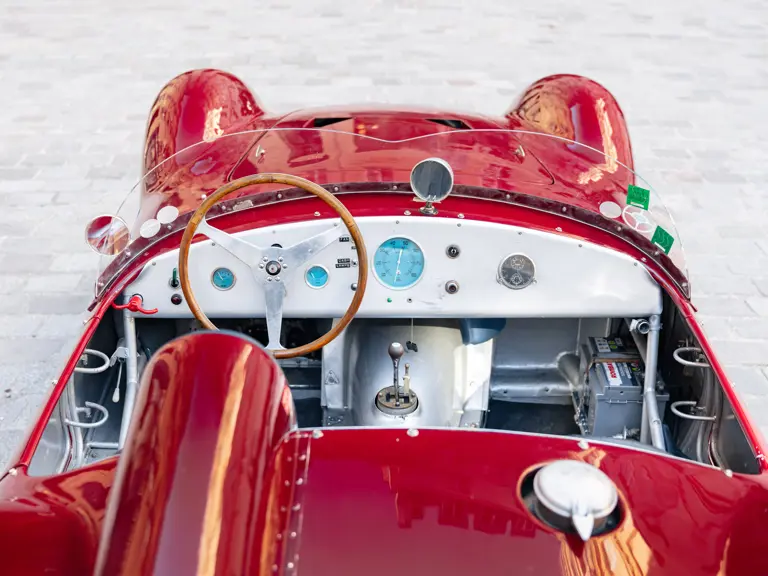


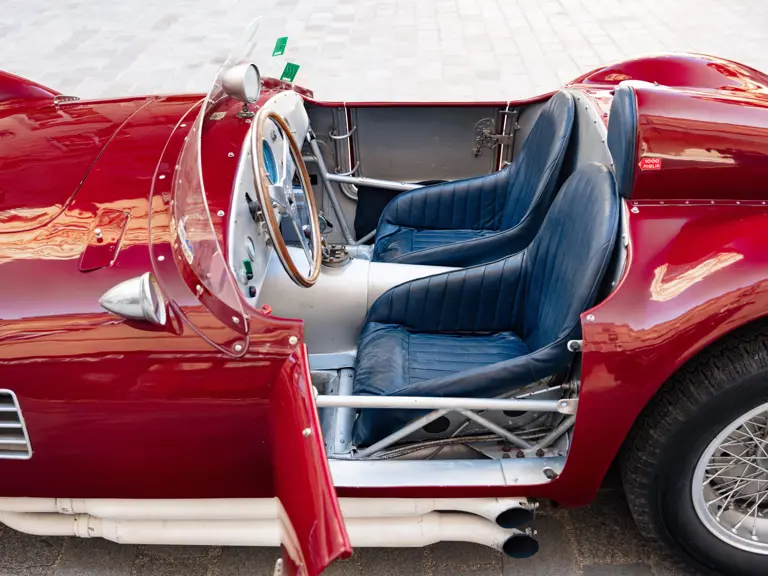
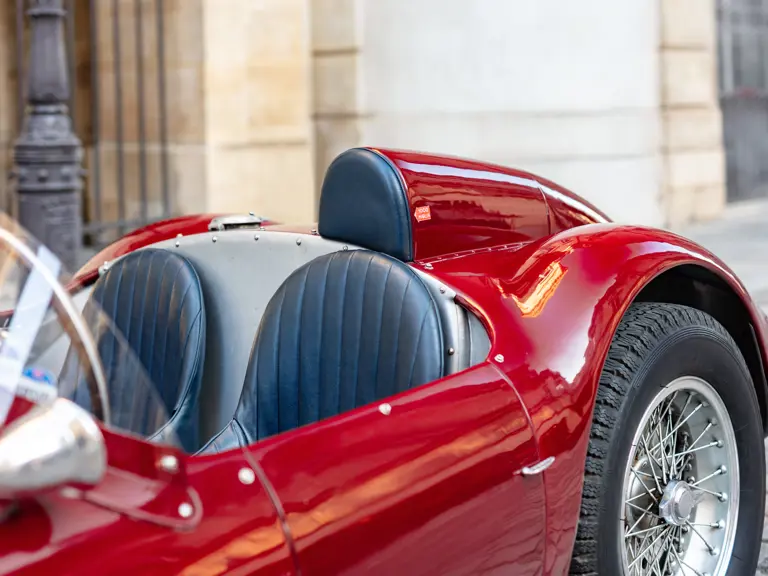
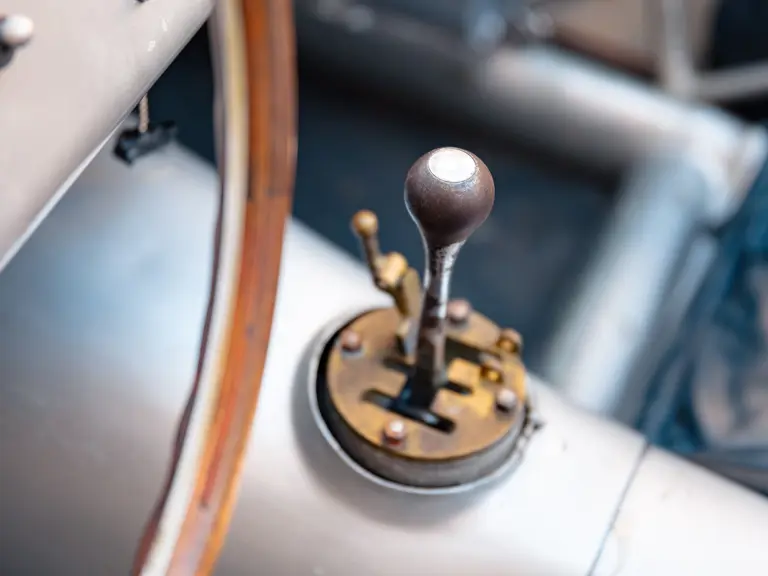
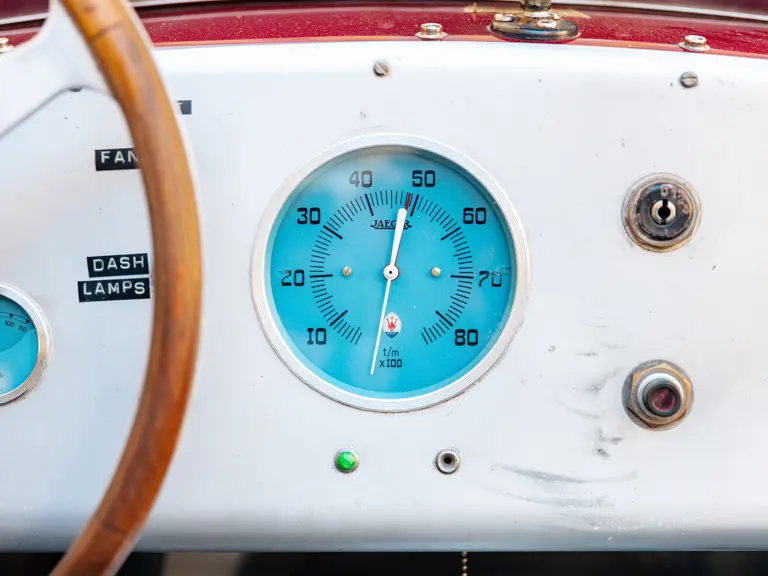
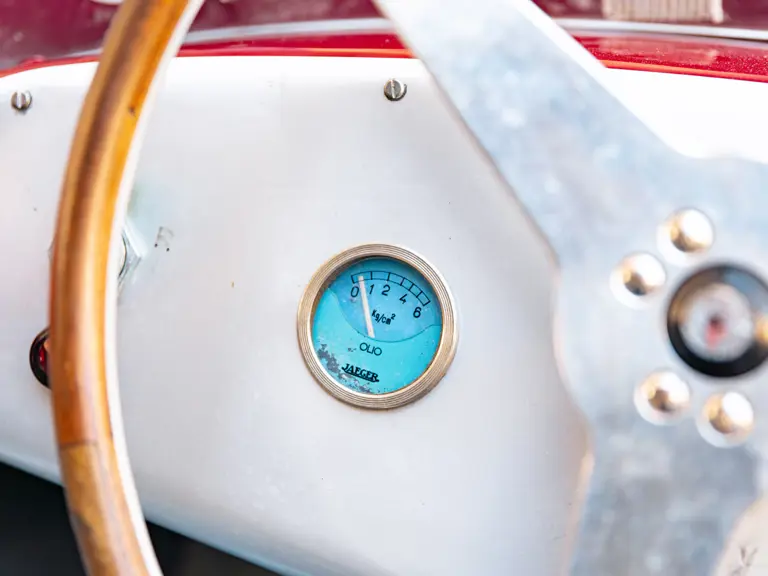
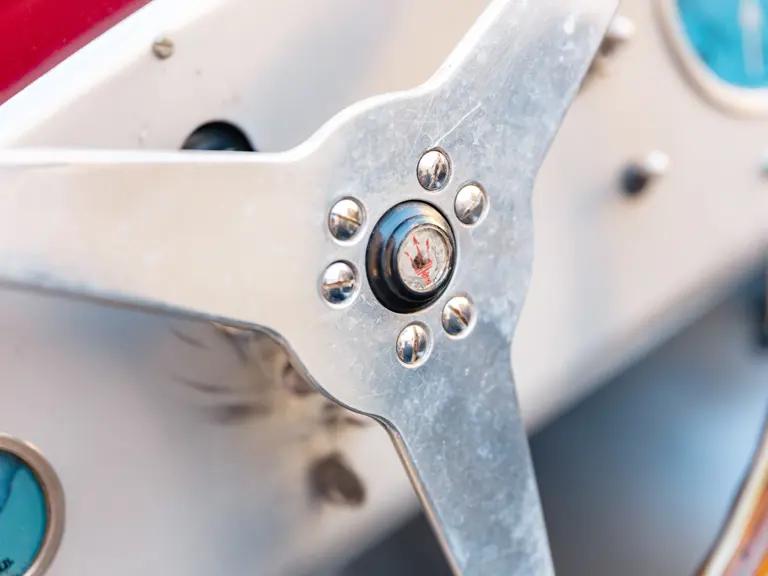
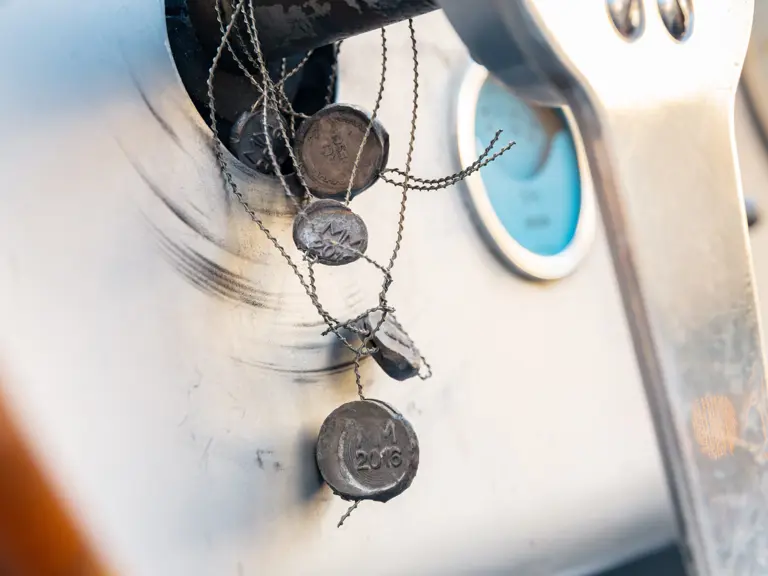
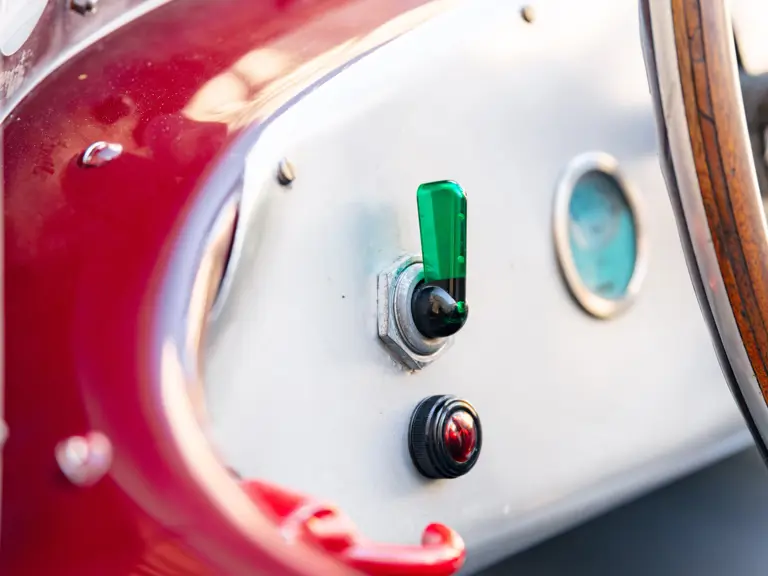
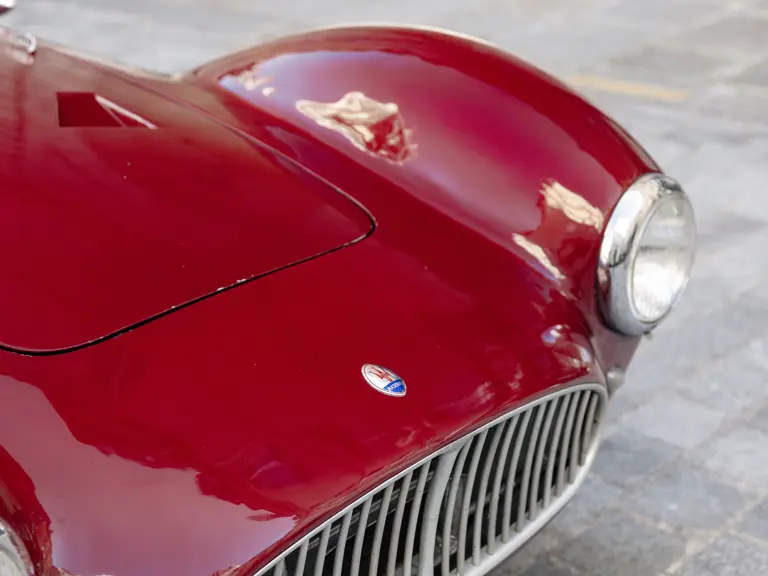
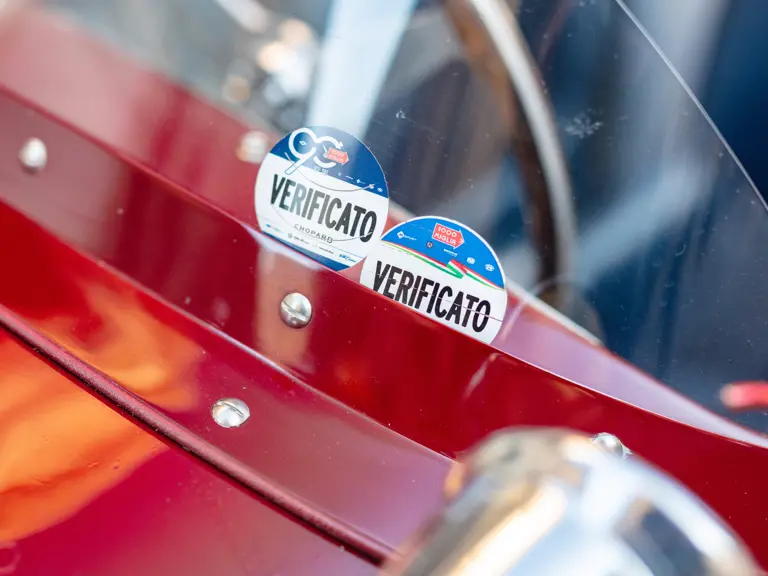
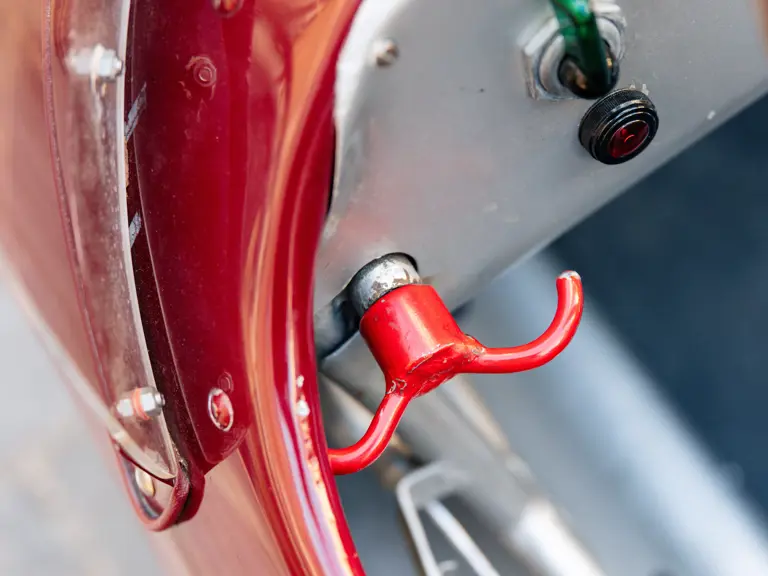
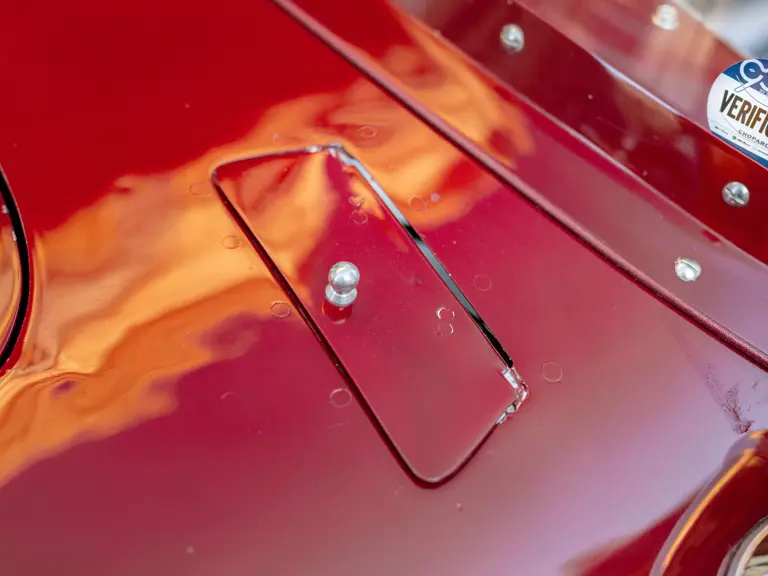
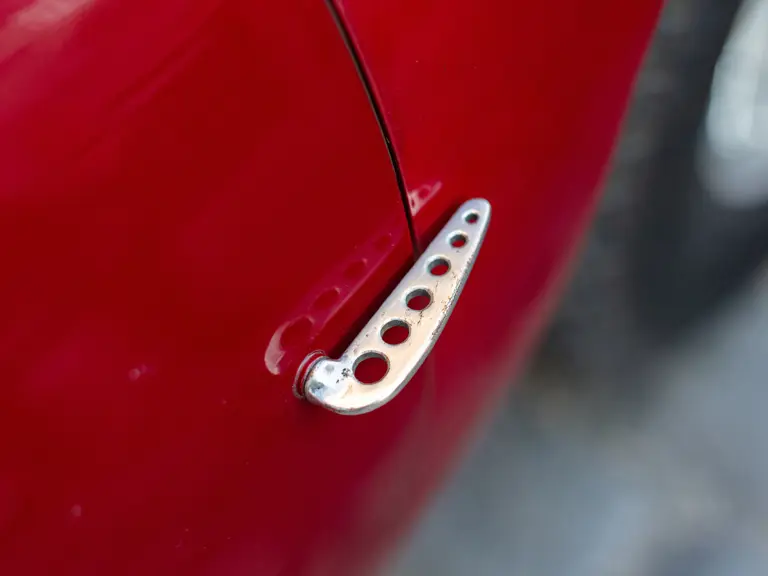
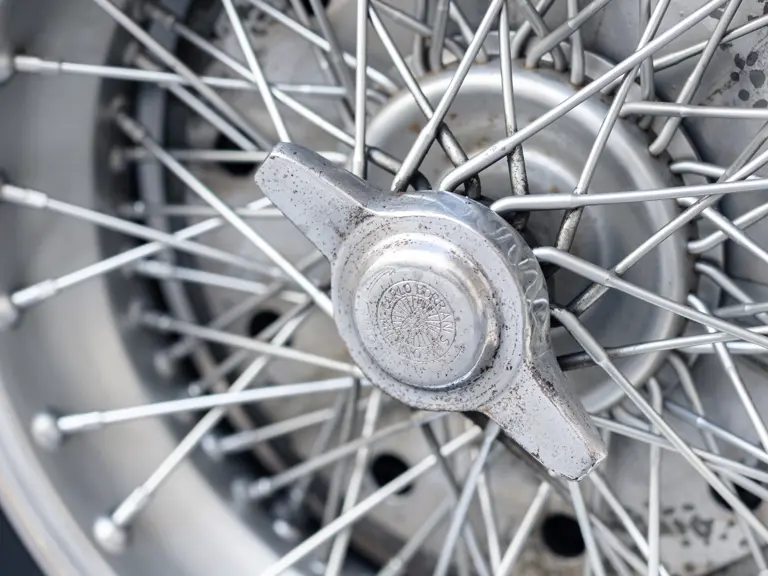


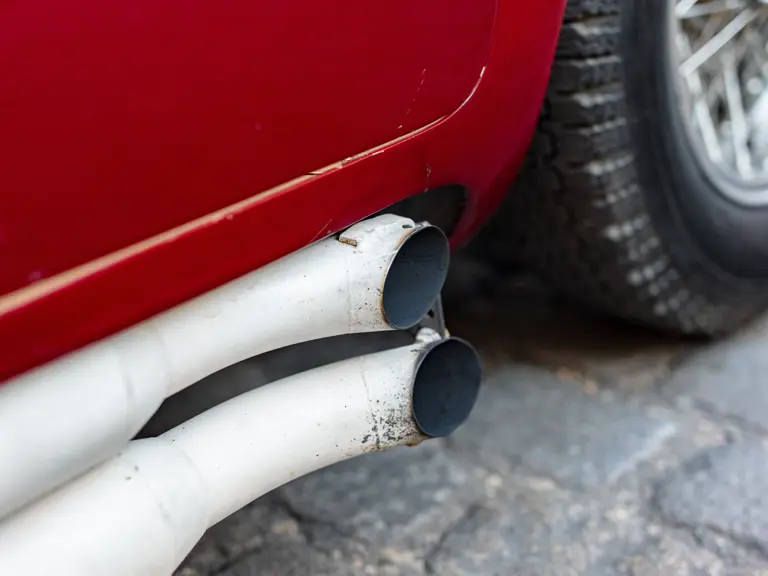
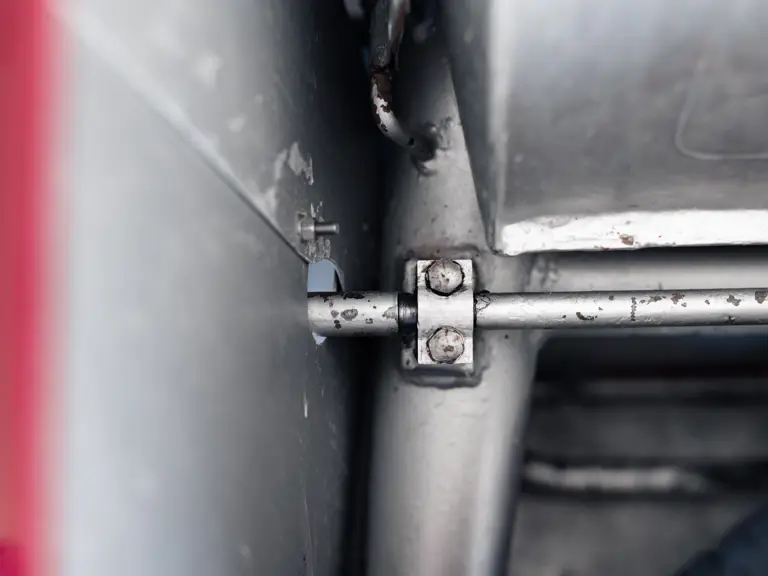
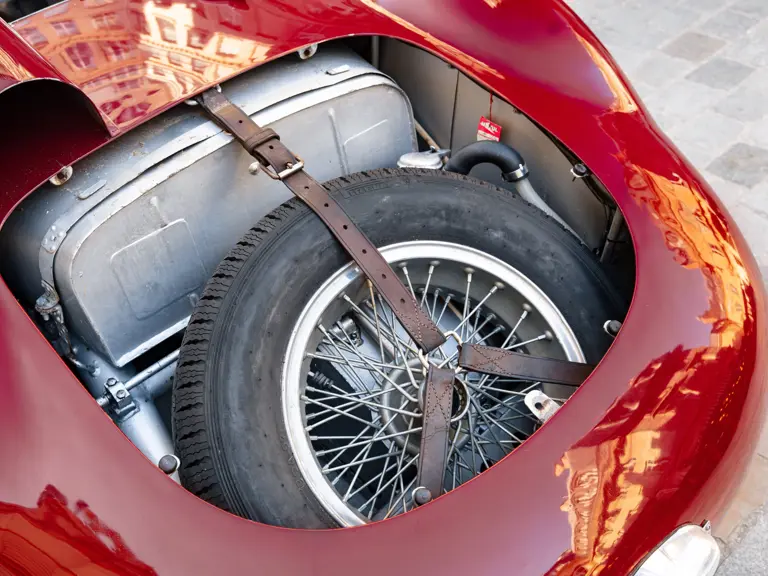
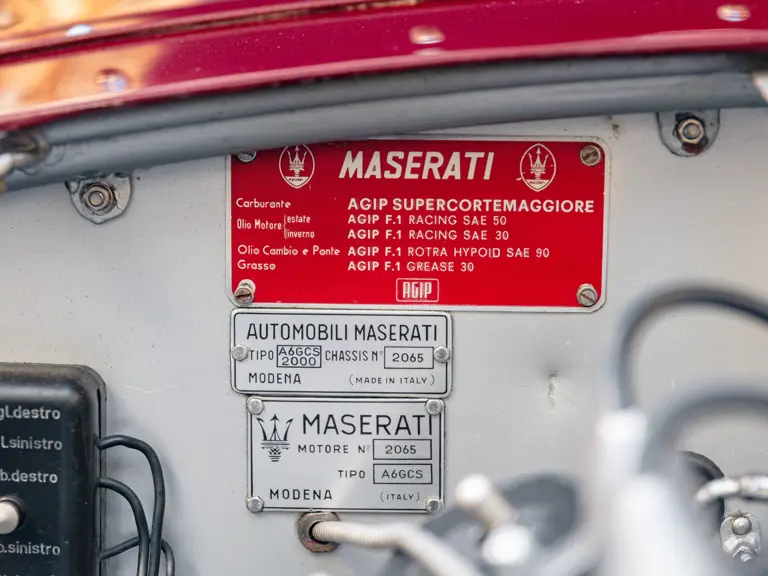
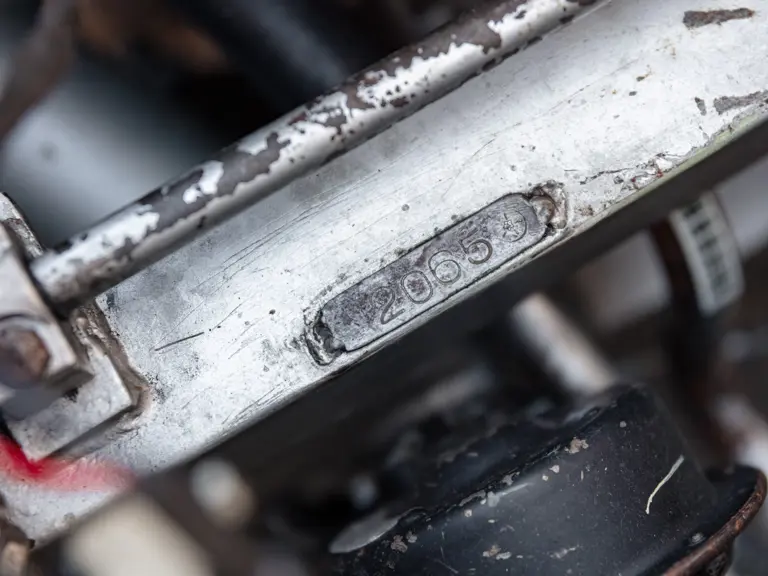
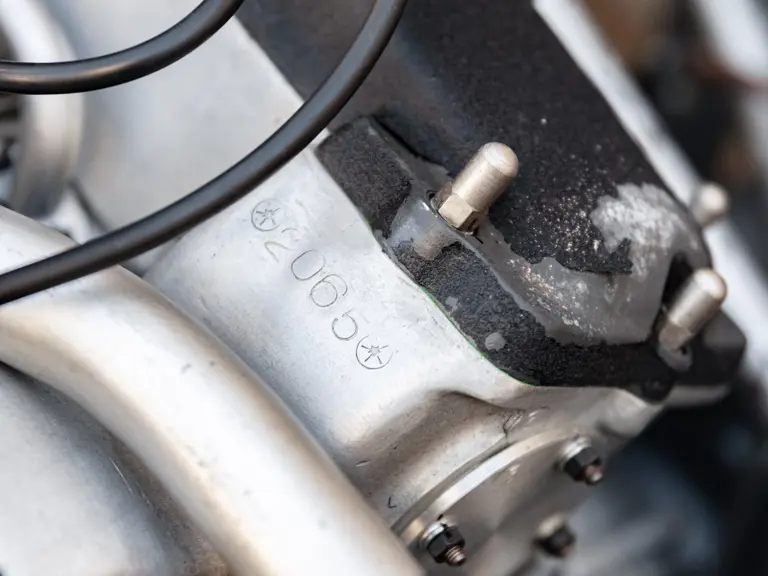
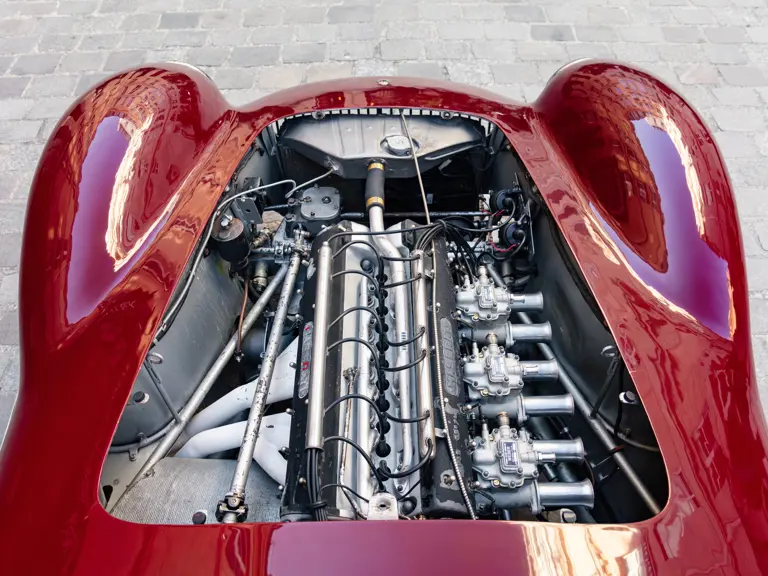
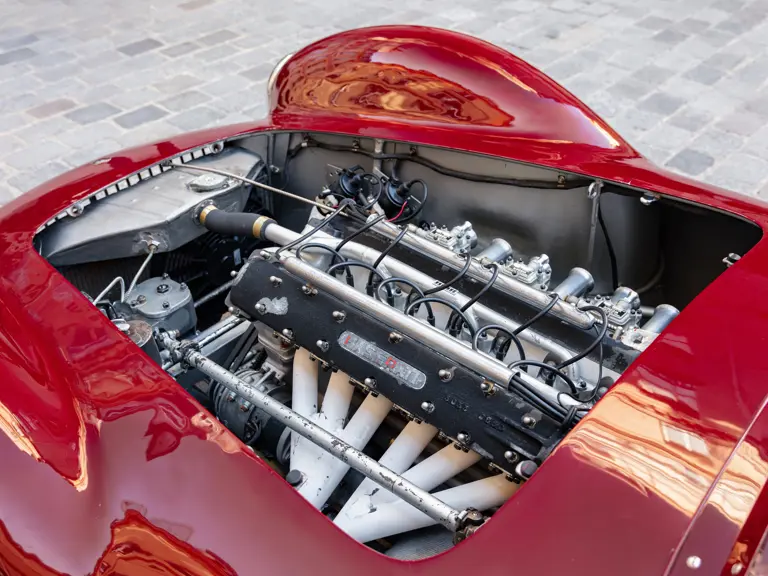
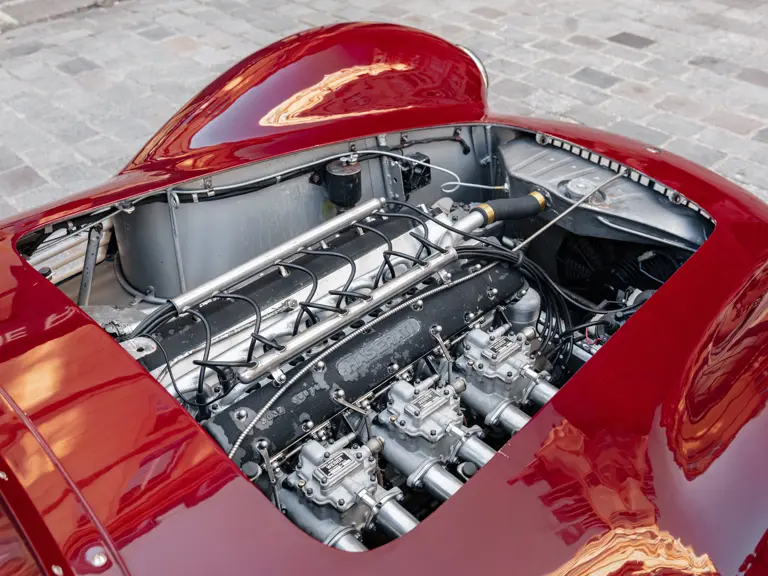
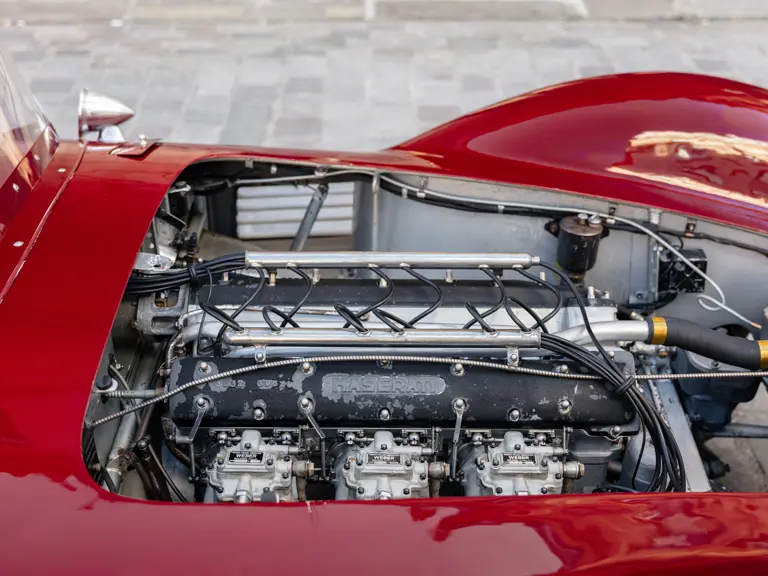
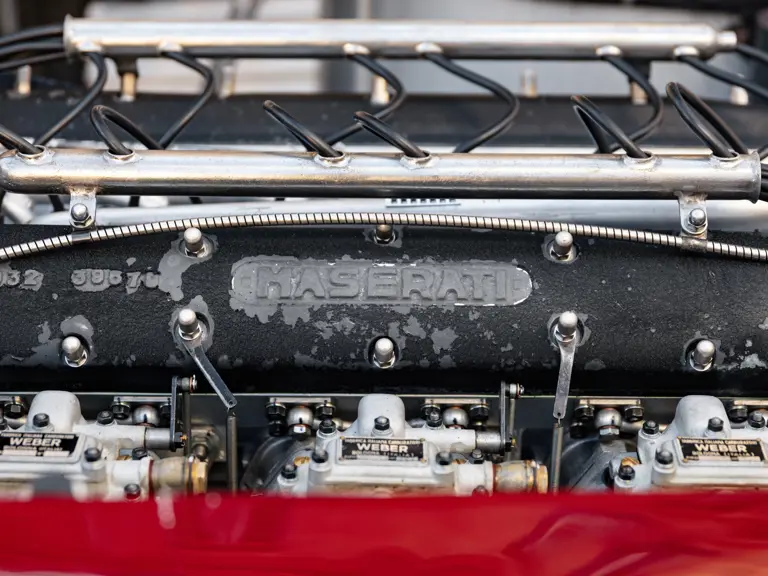
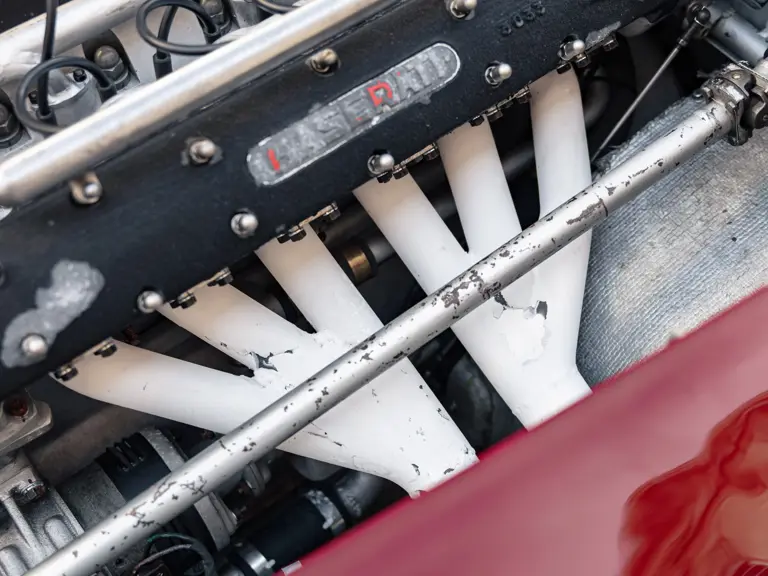
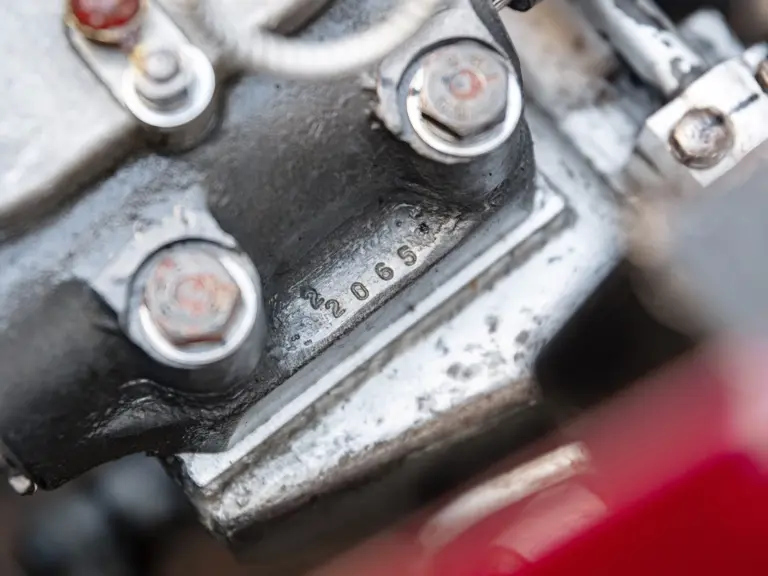

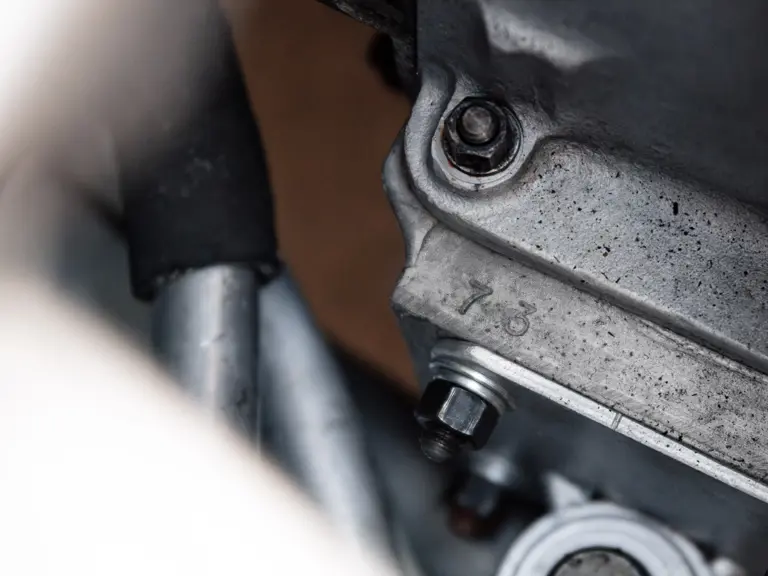
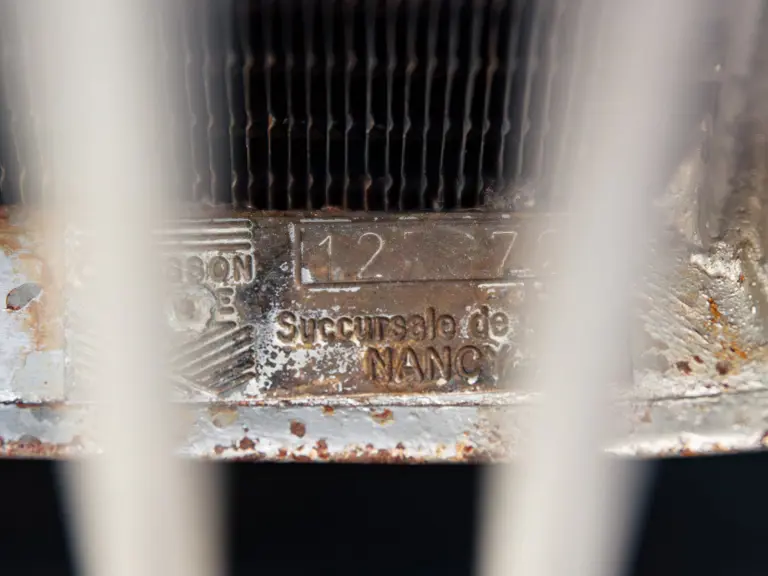

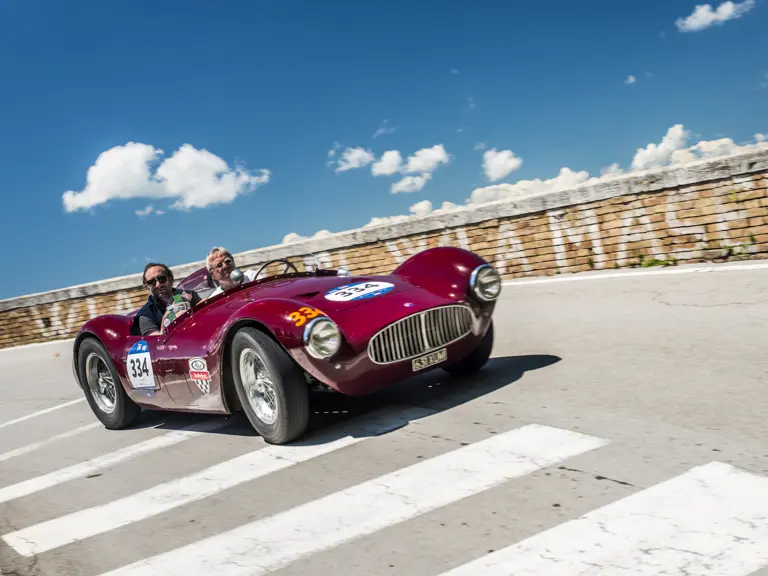
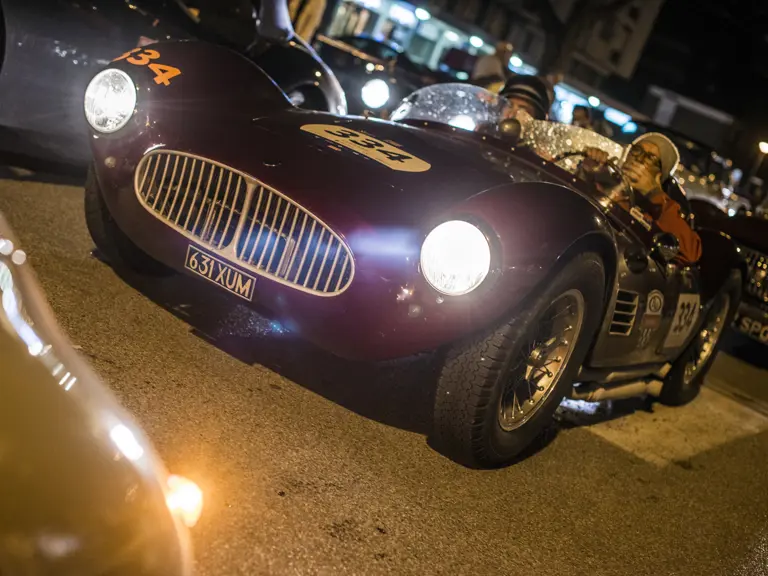

 | London, United Kingdom
| London, United Kingdom
